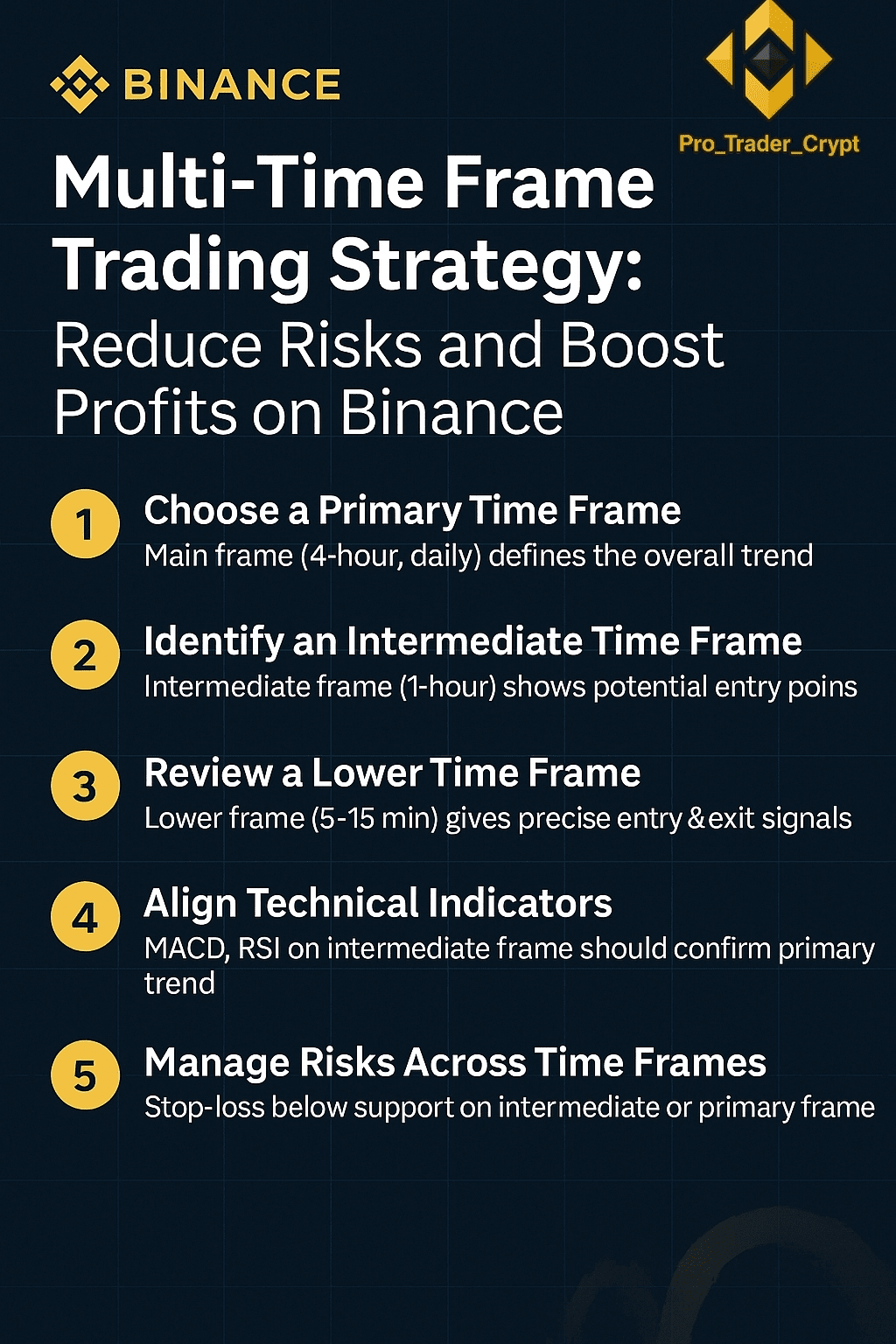1. Choose a primary timeframe 📊
>> The primary timeframe (such as 4 hours or daily) sets the overall trend.
👈How to use it: Follow the upward or downward trend in this timeframe to avoid trading against the market.
2. Set a medium-term timeframe 🕒
>> The medium timeframe (1 hour) shows potential entry points within the overall trend.
👈How to use it: Wait for price corrections towards support/resistance levels before entering in the direction of the primary timeframe.
3. Review a short-term timeframe ⏱️
>> The short timeframe (5–15 minutes) provides precise entry and exit signals.
👈How to use it: Use reversal candles (like hammer and doji) or RSI crossovers to time your entry.
4. Ensure technical indicators align 🔍
>> Achieving alignment between time frames enhances signal reliability.
👈 How to use it: Ensure that the MACD and RSI in the medium timeframe align with the primary timeframe trend before execution.
5. Manage risks across time frames 🛡️
>> The stop loss should be below support in the medium or main timeframe.
👈 How to use it: Set the stop loss based on the timeframe that ensures the least volatility while protecting the trade (e.g., between 1.5–2% of the portfolio).
💡 Trader Tip: The more accurately you wait for signals to align across three time frames, the greater your chances of trade success and risk reduction!
#Binance #Multi-Timeframe_Trading #Write2Earn #Technical_Analysis #MACD #RSI #DeFi
